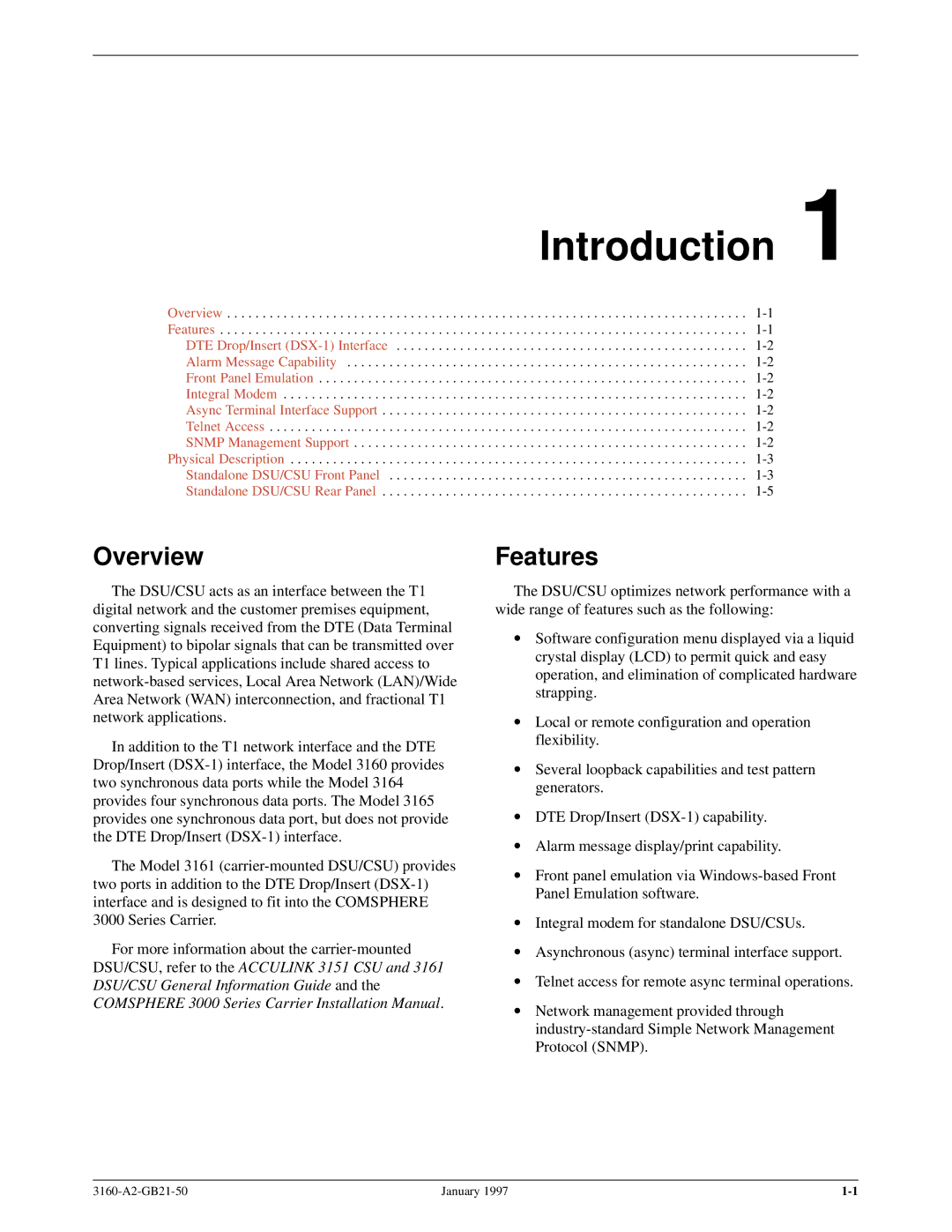
Introduction 1
Overview . . . . . . . . . . . . . . . . . . . . . . . . . . . . . . . . . . . . . . . . . . . . . . . . . . . . . . . . . . . . . . . . . . . . . . . . . .
Features . . . . . . . . . . . . . . . . . . . . . . . . . . . . . . . . . . . . . . . . . . . . . . . . . . . . . . . . . . . . . . . . . . . . . . . . . . .
DTE Drop/Insert
Alarm Message Capability . . . . . . . . . . . . . . . . . . . . . . . . . . . . . . . . . . . . . . . . . . . . . . . . . . . . . . . . .
Front Panel Emulation . . . . . . . . . . . . . . . . . . . . . . . . . . . . . . . . . . . . . . . . . . . . . . . . . . . . . . . . . . . . .
Integral Modem . . . . . . . . . . . . . . . . . . . . . . . . . . . . . . . . . . . . . . . . . . . . . . . . . . . . . . . . . . . . . . . . . .
Async Terminal Interface Support . . . . . . . . . . . . . . . . . . . . . . . . . . . . . . . . . . . . . . . . . . . . . . . . . . . .
Telnet Access . . . . . . . . . . . . . . . . . . . . . . . . . . . . . . . . . . . . . . . . . . . . . . . . . . . . . . . . . . . . . . . . . . . .
SNMP Management Support . . . . . . . . . . . . . . . . . . . . . . . . . . . . . . . . . . . . . . . . . . . . . . . . . . . . . . . .
Physical Description . . . . . . . . . . . . . . . . . . . . . . . . . . . . . . . . . . . . . . . . . . . . . . . . . . . . . . . . . . . . . . . . .
Standalone DSU/CSU Front Panel . . . . . . . . . . . . . . . . . . . . . . . . . . . . . . . . . . . . . . . . . . . . . . . . . . .
Standalone DSU/CSU Rear Panel . . . . . . . . . . . . . . . . . . . . . . . . . . . . . . . . . . . . . . . . . . . . . . . . . . . .
Overview
The DSU/CSU acts as an interface between the T1 digital network and the customer premises equipment, converting signals received from the DTE (Data Terminal Equipment) to bipolar signals that can be transmitted over T1 lines. Typical applications include shared access to
In addition to the T1 network interface and the DTE Drop/Insert
The Model 3161
For more information about the
Features
The DSU/CSU optimizes network performance with a wide range of features such as the following:
•Software configuration menu displayed via a liquid crystal display (LCD) to permit quick and easy operation, and elimination of complicated hardware strapping.
•Local or remote configuration and operation flexibility.
•Several loopback capabilities and test pattern generators.
•DTE Drop/Insert
•Alarm message display/print capability.
•Front panel emulation via
•Integral modem for standalone DSU/CSUs.
•Asynchronous (async) terminal interface support.
•Telnet access for remote async terminal operations.
•Network management provided through
January 1997 |
